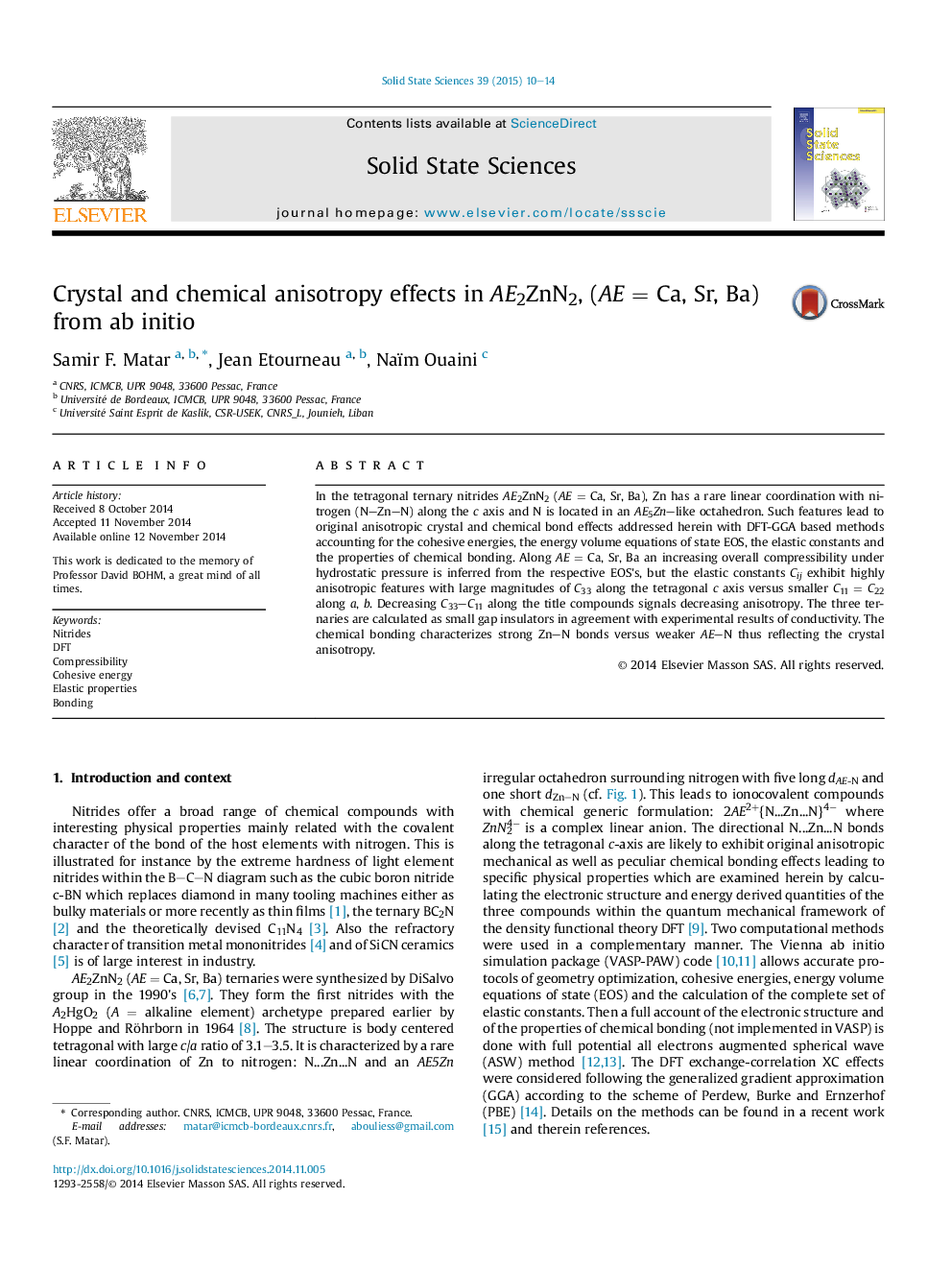| Article ID | Journal | Published Year | Pages | File Type |
|---|---|---|---|---|
| 1504325 | Solid State Sciences | 2015 | 5 Pages |
•In AE2ZnN2 linear N–Zn–N along c axis provide anisotropic structures with original properties.•From DFT, decreased cohesive energy and incompressibility along AE = Ca, Sr, Ba are identified.•The elastic constants exhibit anisotropy with large magnitudes of C33 and smaller C11.•AE2ZnN2 are small gap insulators in agreement with experiment.•The chemical bonding is anisotropic with strong Zn–N bonds versus weaker AE–N.
In the tetragonal ternary nitrides AE2ZnN2 (AE = Ca, Sr, Ba), Zn has a rare linear coordination with nitrogen (N–Zn–N) along the c axis and N is located in an AE5Zn–like octahedron. Such features lead to original anisotropic crystal and chemical bond effects addressed herein with DFT-GGA based methods accounting for the cohesive energies, the energy volume equations of state EOS, the elastic constants and the properties of chemical bonding. Along AE = Ca, Sr, Ba an increasing overall compressibility under hydrostatic pressure is inferred from the respective EOS's, but the elastic constants Cij exhibit highly anisotropic features with large magnitudes of C33 along the tetragonal c axis versus smaller C11 = C22 along a, b. Decreasing C33–C11 along the title compounds signals decreasing anisotropy. The three ternaries are calculated as small gap insulators in agreement with experimental results of conductivity. The chemical bonding characterizes strong Zn–N bonds versus weaker AE–N thus reflecting the crystal anisotropy.
Graphical abstractFigure optionsDownload full-size imageDownload as PowerPoint slide
